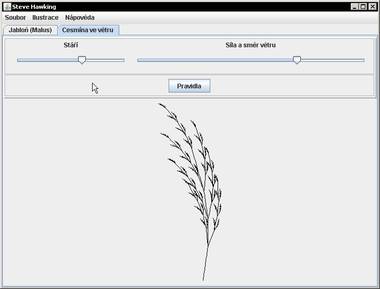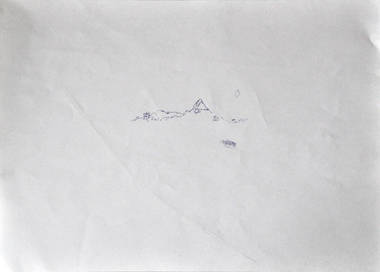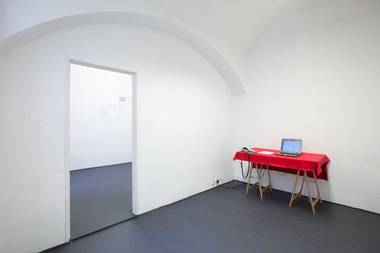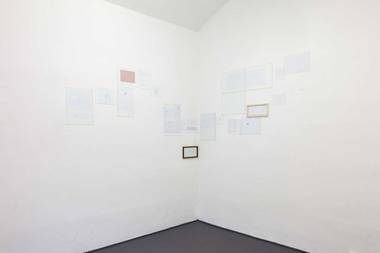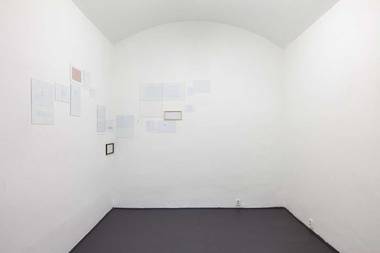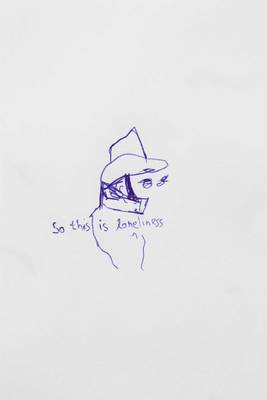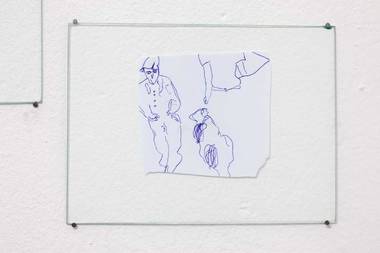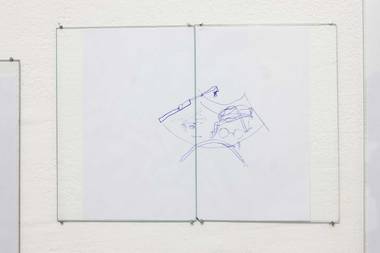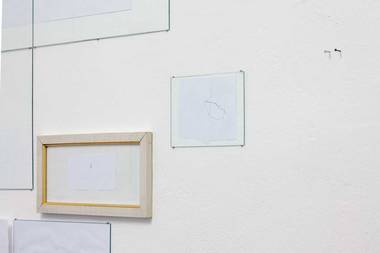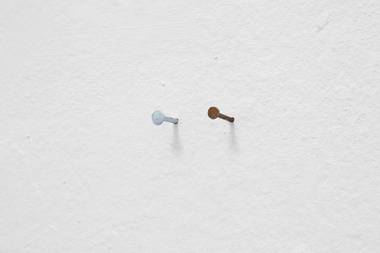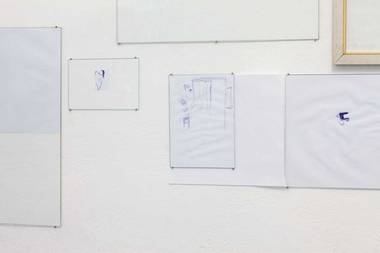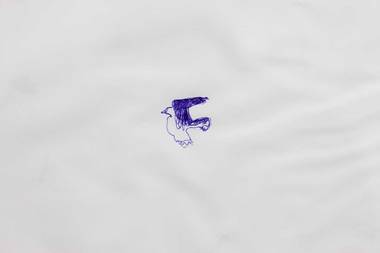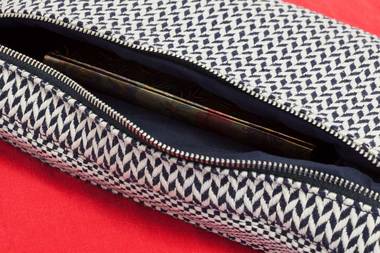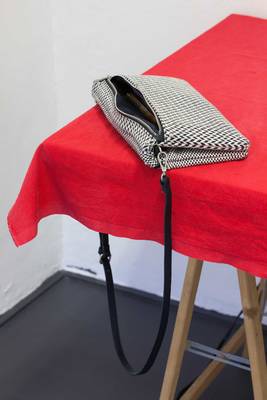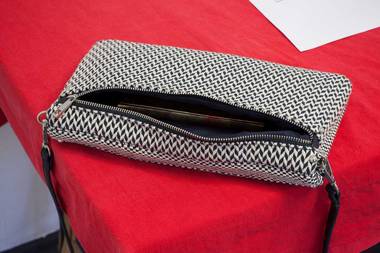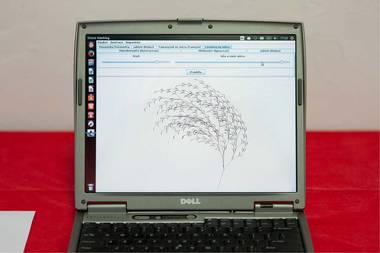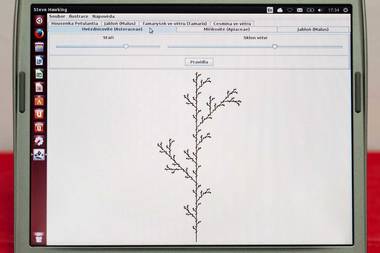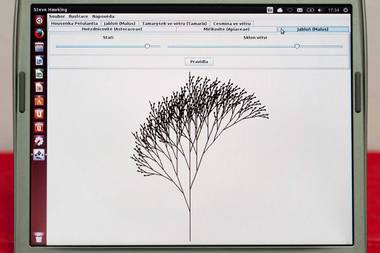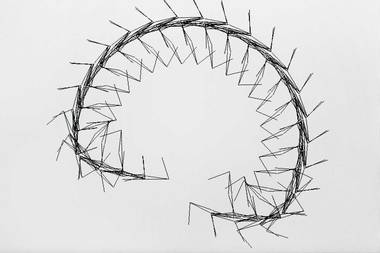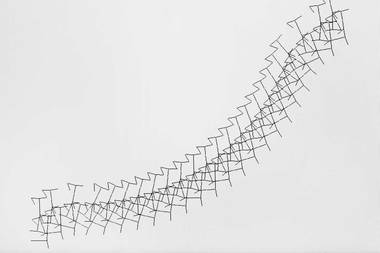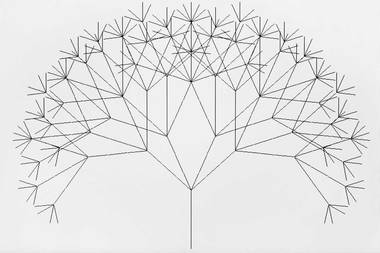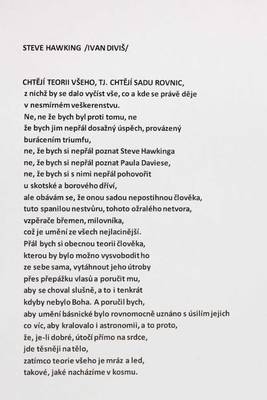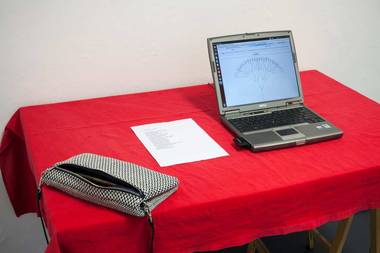Vojtěch Maša: Steve Hawking
1. 4. – 23. 4. 2015
opening: 31. 3. 2015
and
Vojtěch Maša: Faraway, So Close
1. 4. – 23. 4. 2015
opening: 31. 3. 2015
curators: Gabriela Kotiková, Yumi Yahiro
Gabriela Kotiková: Vojta, you are currently studying at the Faculty of Arts (FaVU) in Brno in the Studio of Václav Stratil. What is Václav Stratil like as a studio head? His approach to life and his performances are sometimes quite provocative. Is his teaching style specific in some way or is it similar to other studios?
Vojtěch Maša: Václav spends a lot of time in the studio – he works there, therefore it is practical teaching. I remember that during my 1st year I used to spend most of my days with him. We would paint, talk, play, read... I think that his approach to teaching is very personal; he performs; there is no difference between professional and personal life.
GK: How would you characterize the assistant of this studio, Filip Cenek? How does his personality manifest in this studio?
VM: I prefer to have consultations with Filip one on one, but maybe that’s only my way, I don’t know what the others prefer. His more introverted approach represents a different opportunity for me compared to Václav, although Václav can also be quite closed sometimes. Thanks to both of them freedom prevails in the studio. It’s like nothing I have experienced in any other environment that I’ve been exposed to. Someone could take advantage of that, someone may feel lost, but it suits me.
GK: You are mostly involved in painting and drawing, but in some cases your work crosses over to performance or an activity that deals with the reactions of other people. That was the case, for example in the work “Great Request” (2010) when you painted in the auditorium of FaVU a painting-request across the entire wall (400x270cm) and asked the school board for the possibility to work on this painting for the duration of five years of your studies. The painting would change for every final exhibition at the school and every curator would have to take it into account for all exhibitions taking place there. Could you describe this piece of work in more detail? What is your opinion of the negative reaction of the dean Michal Gabriel to this request?
VM: The largest room (the auditorium) at FaVU, used as a gallery without a curator, is almost always locked (the key is at the reception), and there are no visitors. We wanted to make an open space from the auditorium – a place for work and for meeting people (also outside of the school). The Dean Gabriel didn’t like that I requested something by already occupying the space with my request. If I dealt with that issue in a standard way, I guess he would be more willing to discuss it. But I wanted to take advantage of the mistake that they made; I wanted to appropriate that space and be a part of every next exhibition.
GK: That’s too bad, that auditorium space is still quite “dead” now during the day. If your idea would have been allowed, it could have evoked interesting reactions of the curators. Some of them could be possibly annoyed and may have tried to split the space in a way for the painting not to interfere in their exhibition, etc.
In 2010, you spent some time in Japan, in Tokyo at the Asagaya College of Fine Arts and Design. What was the most surprising thing for you there right after your arrival or what captivated you?
VM: FaVU had a bilateral agreement with this school and every year one student was sent there. Teachers had greater authority there than in Europe. When my classmates had to listen to criticism during the school final exhibitions, they often started to cry (here they would more likely tell the teachers off or they would at least assertively argue with them). The school had a more practical focus, popular studios included character design, film, animation, etc. In my opinion there were two studios of free art- painting and image creation. I chose the second one. It was a private school, footnote.
GK: How would you characterize the difference in approach to painting in the studio that you attended?
VM: They did delicate things in the studio of painting and the students had a great grasp of the technique. In my studio I really liked some of the drawings – they are very good at abbreviation. I also remember one classmate who painted a beautiful painting using a special colouring method – something like colouring books. I understood about 20% of the things that were happening around me, so I had to use my fantasy a lot and try different communication channels such as intuition, guessing, I even tried hypnosis. My ignorance, chaos and coincidence led my work.
GK: Many of your paintings and drawings from that period are influenced by Japan – your paintings and drawings of Japanese fish are very interesting, for example. I was also captivated by your activity in one of the subway stations in Tokyo. You put arrows with signs “I’M HAPPY” and “I’M UNHAPPY” between the turnstiles in the subway. People had to quickly, without being ready for it, choose one option when entering the subway, there was no other way of entering it. Did they not hesitate sometimes? Did it cause any delays in the continuous flow?
VM: Most of the people didn’t pay any attention to it and chose the most convenient turnstile. The number of happy gates was the same as the unhappy ones, but one of the gates was wider – the one for the handicapped – and that one was used by most people. I put the arrow “I’m unhappy” there, therefore I manipulated the research that way in order to fulfill my original expectations about the result. Some of the people hesitated on their way and then chose the happy gate, some chose the unhappy one and some tried to avoid stepping on the arrows.
GK: The result of this experiment showed that people are primarily unhappy. You then decided to inform the Japanese emperor about this result by sending him a letter. Do you think that your letter ever got to him? Did you get any reply?
VM: It’s hard to say. I really don’t know if it actually got to him. I have not received a reply so far.
GK: Two years ago you won the Prize Exit for the year 2013 – it’s a prize for distinct young artists. You used the financial award to make your own Nobel Prize because you wrote that it was your ambition since high school graduation to receive the Nobel Prize. Did you really make this prize from18 carat gold? You wrote that you would be satisfied with a smaller medal and during installation (whether in a gallery or on a night table) you would use a magnifying glass that would enlarge the coin to the actual size of the Nobel Prize. How did this all turn out?
VM: I had the medal made from pure gold like it used to be made in the past until 1980. With respect to the budget the size ended up being just under 4 cm in diameter. They organized an exhibition for me at the Gallery Kostka as a part of the award. I exhibited the medal there in a glass case. Two magnifying glasses had to be used; I put instructions there with a scheme how to enlarge the medal to the required size.
GK: You originally studied mathematical biology at the Masaryk University in Brno. Did you finish this program? Was this type of study limiting for you somehow and that’s why you decided to go to an art school? Or did you want to interconnect these two areas, if that’s at all possible...?
VM: Yes, I got my bachelors degree there. This question actually relates to my current exhibition in the Gallery “Steve Hawking”. Ivan Diviš expresses the relationship between science and art in a poem and I have commented this poem with an application in Java, which I consider to be an illustration. I would leave the question what is more – whether art or science and whether they can be interconnected, up to the visitors.
GK: Can I just ask how this Java application works? The viewer chooses a plant in the program and its image then generates itself and creates a “work of art”?
VM: There are several plants and one animal. They get generated with the help of recursive grammars that the visitor can display. They are called L-systems that are known to be used to modelling of plants – that is nothing new, therefore, I would not say that the viewer is creating a piece of art work. I also programmed a function there where it’s possible to enter your own grammar and model our own original trees / natural formations.
GK: Your second exhibition, taking place at the same time in the Gallery Jeleni is called “Faraway, So Close” and it is a collection of drawings. Does it have any correlation with Wim Wenders’ movie from the year 1993?
VM: Yes, it’s sort of a soundtrack to that movie.
GK: Thank you for the interview.
Jeleni Gallery exhibition program is possible through kind support of Ministry of Culture of the Czech Republic and Prague City Council
Media support: Artycok.tv, ArtMap and jlbjlt.net
